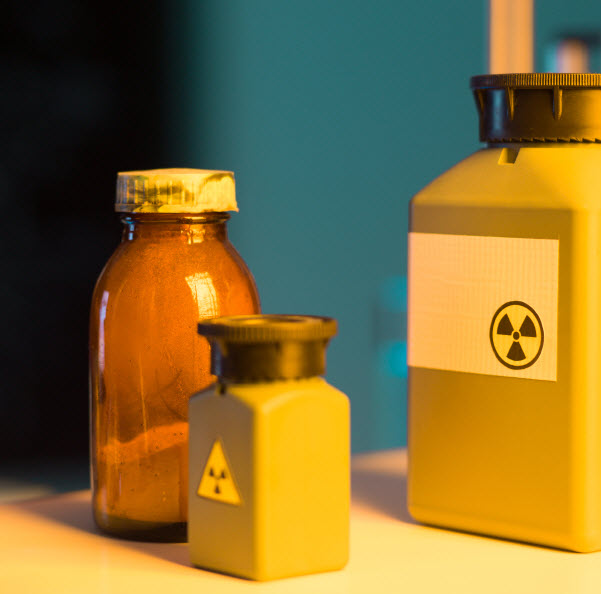Medical environments generate a lot of waste, and the waste they generate often poses one or more hazards. Waste in a medical environment must be segregated based on the hazard(s) it presents and stored in accordance with applicable state and federal regulations.
 |
Here are some pointers on storage for wastes generated in medical environments.
Storage Tips
If a waste falls into any hazard category, it cannot be disposed of in unmarked containers or bags. Storage and disposal containers must be:
- Labeled to indicate all the hazards that a waste poses. This can be biohazard, radioactive hazard, or chemical hazard (hazardous chemical waste is simply labeled as “hazardous waste”). Containers of hazardous medical waste must be labeled with the accumulation start date.
- Appropriate for the type of waste. As with labels, the storage containers must meet the requirements for each category into which the waste falls.
- Sharps waste must be stored in leak-proof, puncture-resistant, closeable containers.
- Biohazardous nonsharps waste must be disposed of in leak-proof bags that are strong enough to prevent ripping, tearing, or bursting under normal conditions of use and must be closed securely when full.
- Low-level radioactive waste must be stored in containers that are leak-proof and securely closeable.
- Hazardous waste must be stored in compatible containers that are closeable and leak-proof.
Storage rooms and areas must meet specific requirements also, including signage and labeling requirements for each type of waste. Additional requirements for storage areas, rooms, and facilities include:
- Regulated medical waste storage areas must be accessible only to authorized personnel. In part, this is to prevent the theft of items like hypodermic needles and drugs. The area must be secured against insects and vermin. In addition, these storage areas must be temperature-controlled in order to prevent the waste from rotting.
- Low-level radioactive waste storage facilities must meet certain design requirements, including requirements for fire suppression systems, ventilation, and drains.
- Hazardous waste storage facilities must be designed and equipped to prevent fires (including fire extinguishers and fire suppression systems), explosions, and spills. They must have internal communications that can signal an emergency to personnel at the facility as well as to local emergency responders. In addition, hazardous waste storage facilities must have adequate aisle space.
Some waste storage is time-limited.
- Regulated medical waste storage is not time-limited in all states; where it is time-limited, limits vary from 7 days to 90 days.
- Low-level radioactive waste storage is generally intended to hold waste until it has decayed enough to be disposed of as nonradioactive waste. These facilities often hold waste for years.
- Hazardous waste storage must not be allowed to accumulate for more than 180 days for most small-quantity generators, although generators that must ship hazardous waste more than 200 miles for disposal can accumulate waste for up to 270 days in most states. Large-quantity generators have a 90-day accumulation limit.
The trick for medical facilities is not complying with any one set of regulations—the trick is segregating and organizing mixtures of waste in order to deal with all of the applicable regulations. Clearly, the limits on holding regulated medical waste and hazardous waste could be problematic if the waste is also low-level radioactive waste.
Need more waste management tips? Enviro.BLR.com® won’t waste your time.
